RCS: Radar Cross Section and Stealth
Building a stealth automobile with a reduced RCS
It is highly unlikely that you can build an automobile completely invisible to radar but in traffic with other vehicles, you just have to return the smallest radar signal in order to avoid detection. When you are the only vehicle on the road, a stealthy vehicle will be hard to detect at a distance. Complete Radar invisibility is nearly impossible. A stealth automobile can be created with the use of fiberglass components which are transparent to radar and a dielectric broadband radar frequency absorber. Note that metalic paint is so radar reflective that it would negate all other efforts to make the vehicle stealthy. The interior cabin can also be a source of reflecting radar and must also be treated to attenuate radar signals.Radar absorbers come in many forms and of course many of those forms are not available to civilians. The Radar Absorbant Material (RAM) used here is a radar absorbant foam used in anechoic chambers for electromagnetic radiation measurements.
| Basics of a dielectric broadband absorber | 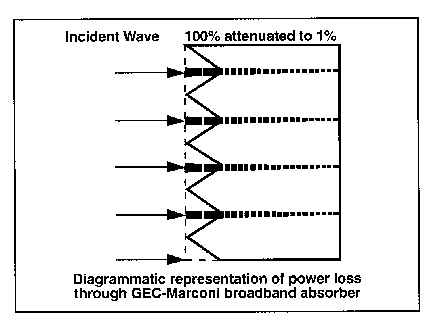 |
| Performance for LA-0 absorber. | 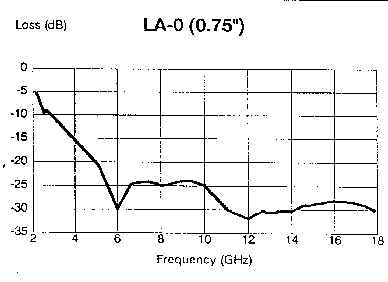 |
| Raw panels of LA-0. | 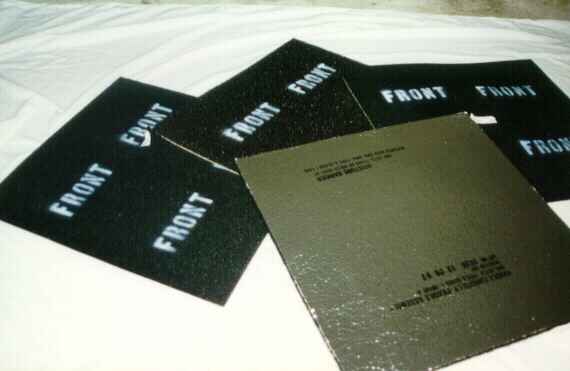 |
| 3/4" in LA-0 in front bumper. | 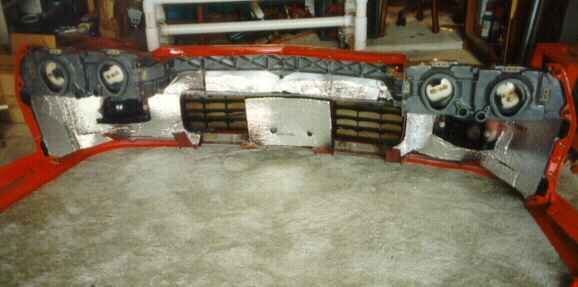 |
| 3/4" in LA-0 in rear bumper. | 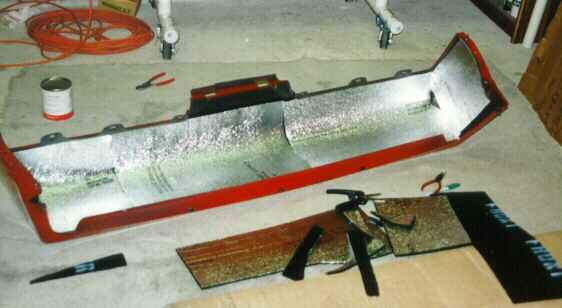 |
| LA-0 in fender. | 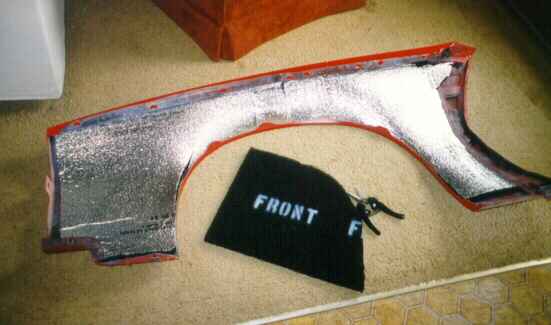 |
| LA-0 in interior cavity. The interior is a large source of reflection. | 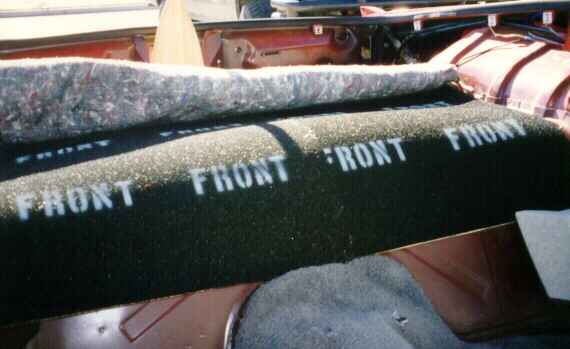 |
| LA-0 in interior cavity. The interior is a large source of reflection. | 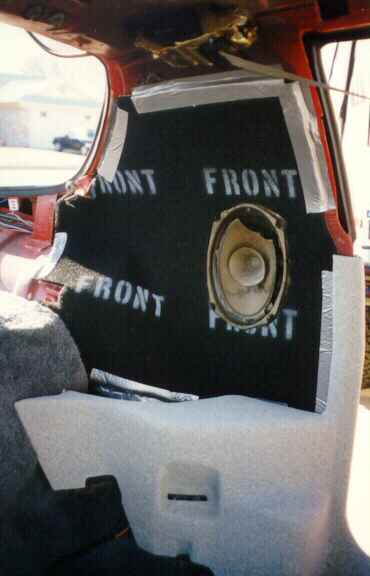 |
Absorber is required under the head liner, hood, behind the bumpers and everywhere on a vehicle where reflection may be a problem. This of course requires fiberglass or plastic body panels which are permeable to the appropriate frequencies. The thicker the absorber the greater the distance available for attenuation and thus less reflection. A 3/4" absorber is ideally suited due to its good absorption but it may be too thick to use under the headliner where a 3/8" panel may be more practical. The GEC Marconi (now BEA) LA-0 material is lightweight (3 lbs/ft**3), flexible and available in 3/8, 1/2, 3/4, 1 and 1 1/8 inch thicknesses. The thicker absorbers have better performance when attenuating the lower frequencies.
Further design considerations: The rear window louvers used in this vehicle are an Astra plastic unit. They are not quite as aesthetically pleasing as the aluminum units but the plastic unit has a much lower RCS.
Note: Metallic paint gives your vehicle an electromagnetic signature which can't be ignored. It is also radiopaque. Avoid metallic paint completely.
RAM Material Manufacturers:- ARC Technologies: dielectric absorber foam
- BEA Systems stealth materials manufacturing
- Eeonyx: fabrics
- MSM Industries: microwave absorbers
- Laird: microwave absorbers
- PPG Aerospace/Cuming Microwave: microwave absorbers
- Thorndike Corporation: microwave absorbing dielectrics
(Disclaimer: Of course we are talking about your stereo.)

